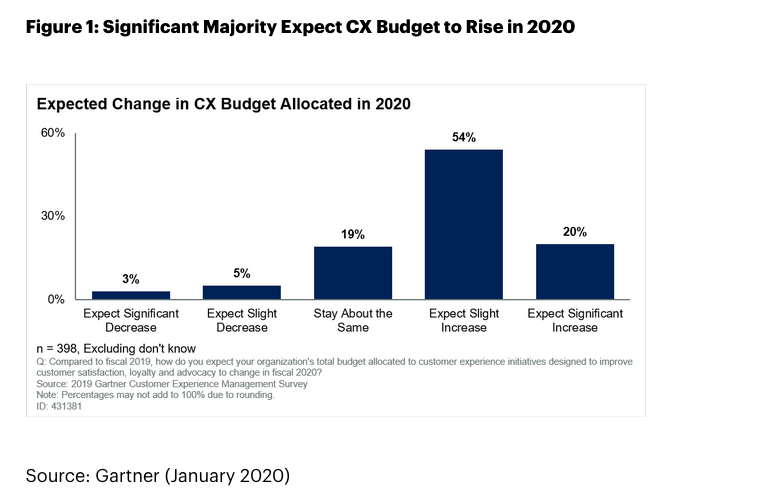Customer Service vs. Customer Experience: What’s the Difference?

Customer Service (CS) and Customer Experience (CX) are both frequently used terms in the business world. And oftentimes, these two phrases are used interchangeably.
But are Customer Service and Customer Experience in fact the same thing? The short answer? No. CS and CX are certainly related, but they’re not the same thing.
What exactly is the difference between the two? And does one matter more than the other? Read on to explore how Customer Service vs. Customer Experience differ — and how they’re related.
Customer Service Defined
According to Salesforce, Customer Service is “the support you offer your customers — both before and after they buy and use your products or services.” In other words, it’s assistance you give to customers throughout the customer lifecycle, with the ultimate goal of improving customer satisfaction.
When Customer Service is Delivered
Customer Service can take place before a sale. For example, a customer shopping on Clinique.com can do a live chat with a Clinique expert to get tips and advice before making a purchase.

Customer Service can also be delivered after a sale to help a shopper resolve an issue, ensure they’re fully satisfied with the products or services they’ve purchased and restore trust. For example, a customer might contact Customer Service about a vacuum cleaner that stopped working shortly after it was purchased.

How Modern Customer Service is Delivered
Not long ago, Customer Service was primarily provided in-person or via phone. But today, a growing number of customers seek out support via digital channels, a trend that has only accelerated in the midst of the COVID-19 pandemic. In fact, Forrester predicts digital Customer Service interactions will increase by 40% this year.
Of course, shoppers are reaching out for help via email, web forms and live chat. And they’re also seeking assistance both pre- and post-sale via social media, reviews and product Q&A.
For example, this shopper is using Q&A as a tool to get information before purchasing a new dining table.

While this shopper is expressing their dissatisfaction with a pair of athletic pants she recently purchased:

Today, businesses must be equipped to respond to Customer Service queries and complaints – regardless of what channel a shopper chooses to use.
Good Customer Service Matters More Than Ever
The best businesses have always made Customer Service a top priority. And for good reason.
Great Customer Service can be the difference between winning and losing a sale. According to Salesforce’s most recent State of the Connected Customer report, 71% of consumers indicate they’ve made a purchase decision based on the quality of Customer Service they received. What’s more, great Customer Service drives loyalty. Nearly all (91%) of consumers say good Customer Service makes them more likely to make another purchase from a business.
In the midst of the ongoing global pandemic and related financial crisis, Customer Service has become more important than ever.
More than half (58%) of consumers say the pandemic has raised their standards for Customer Service. Increasingly, shoppers expect service that’s quick, personalized and in their native language — regardless of where and how they initiated contact.
And in today’s climate, businesses must deliver empathetic service. At a time when there are so many people struggling, it’s the right thing to do. And it pays off. 71% of consumers say that businesses that show empathy during the pandemic have earned their loyalty.
Clearly, the interactions your shoppers have with members of your customer care team are important. But these aren’t the only experiences that shape the way shoppers perceive your brand.
Customer Experience Defined
Now that we’ve got a good handle on Customer Service, let’s switch gears to Customer Experience. What exactly is Customer Experience (CX)? It’s the sum of every interaction a shopper has with your company, throughout the entire customer lifecycle. Collectively, these interactions determine how a customer perceives your brand — or how it makes them feel.
CX is Built on Every Single Interaction a Customer has with Your Brand
Customer Service is a piece of the Customer Experience puzzle — but it’s one of many.
Every interaction a customer has before, during and after a purchase contributes to how they perceive your brand. In addition to Customer Service, here are a few other key interactions that drive overall Customer Experience.
 Product Experience: Are your products of good quality? Do they work like they’re supposed to? Do you iterate on products to meet the changing needs of customers?
Product Experience: Are your products of good quality? Do they work like they’re supposed to? Do you iterate on products to meet the changing needs of customers?
Website Experience: Is it easy to navigate? Does it work on all different types of devices? Can shoppers find the information they’re looking for, including product reviews and Q&A? Do you offer any unique experiences on your website? For example, Warby Parker allows online shoppers to virtually “try on” eyeglasses.
Third-Party Experience: Although Direct to Consumer is the dream these days, most retailers still need partners and vendors such as Amazon, Walmart and eBay. When it comes to CX, don’t forget about these channels. Ensuring a congruent experience across channels is key. (Pro tip: check out Commerce Studio’s Product Information Management tool to streamline this across channels.)
Mobile App Experience: Is your app user-friendly? Is it easy for shoppers to find what they’re looking for?
Physical Location Experience: Are your stores or restaurants clean and well-stocked? Are they following COVID safety guidelines?
Curbside Pickup Experience: (aka buy online, pickup in-store — or BOPIS) How long do customers have to wait? Do they get everything they ordered? Is BOPIS staff following COVID safety protocols?
Marketing Interactions: Are marketing campaigns personalized (when possible), relevant and engaging? Are the stories your campaigns are telling lining up with those in other channels such as your app and website?
Social Media Interactions: Are interactions with your brand, and, importantly, other customers, telling the same story across social media, reviews, and questions and answer forums?
Global Experience: Across all of these mediums, there’s one more thing that’s important for global brands: translation. Are your customer care agents armed with the fastest and most accurate translation tools that allow them to provide seamless support in any language?
CX is a Focus for Winning Businesses
The phrase “Customer Experience” has become a lot more common in the last decade or so. That’s because increasingly, businesses understand that experience matters. According to Salesforce, 80% of consumers indicate that the experience a company provides is as important as its products and services.
It’s clear that experience can be a big differentiator — even when product offerings are largely similar. So it’s not surprising that spending on CX has increased. According to a Gartner report, 74% of organizations expected larger CX budgets coming into 2020. In comparison, only 47% of organizations expected larger CX budgets coming into 2018.

CX Investments Pay Off
Businesses that invest in Customer Experience teams and initiatives are seeing big payoffs. An article from Forbes tells us that brands with superior Customer Experience bring in more than five times more revenue than competitors with inferior CX. And 84% of companies that work to improve Customer Experience say their revenue has increased.
By consistently delivering great Customer Experiences, brands have the opportunity to build lasting, lucrative relationships with their customers. According to Salesforce, 53% of customers say they feel an emotional connection to the brands they buy from most. Those emotionally connected customers will spend more — and tell their friends and family about their great experiences.
 Customer Service vs. Customer Experience: Make Both a Priority in 2021
Customer Service vs. Customer Experience: Make Both a Priority in 2021
Delivering a great product at the right price is important. But it’s no longer enough. Today, a growing number of shoppers make decisions based on the experiences they have with a brand. The pressure is on to deliver great Customer Experiences throughout the customer lifecycle.
Of course, great Customer Service is important. And it certainly contributes to how consumers feel about your brand. But remember: Customer Service is just one piece of the CX puzzle.
In 2021, make Customer Experience a priority — and reap the benefits. Learn how 1440 can help.
